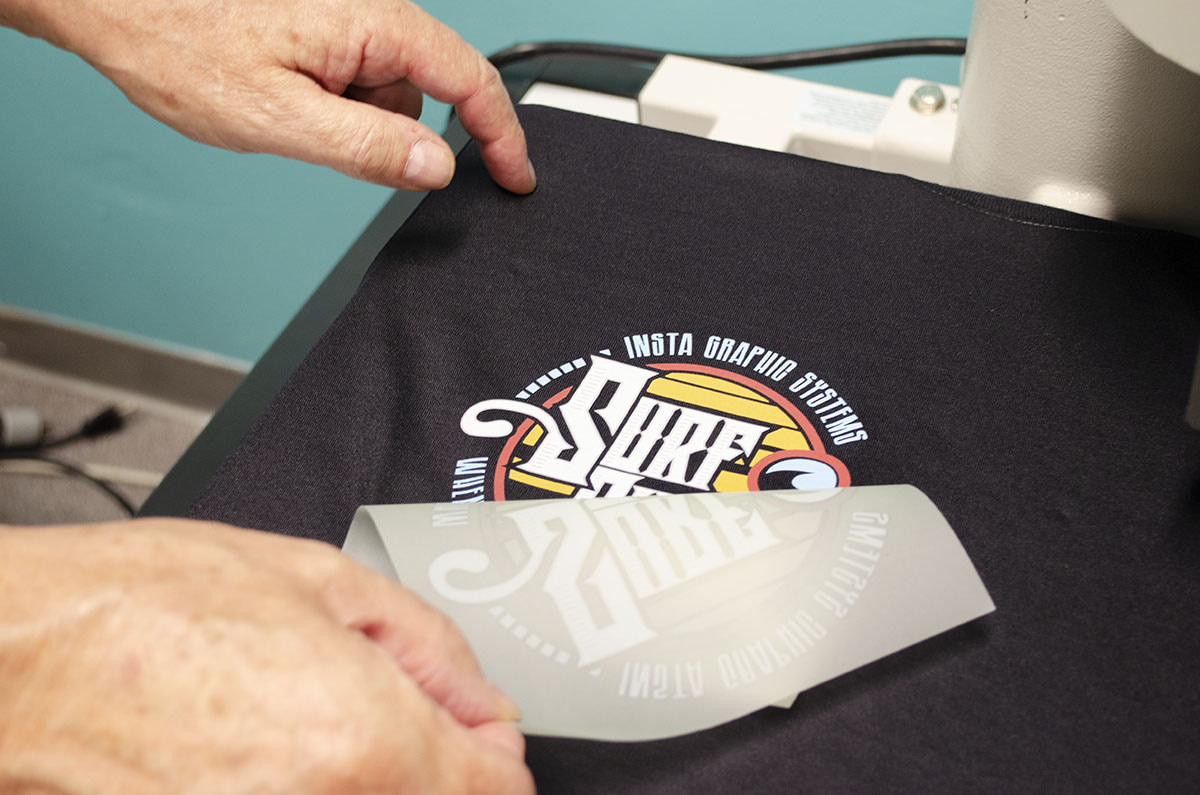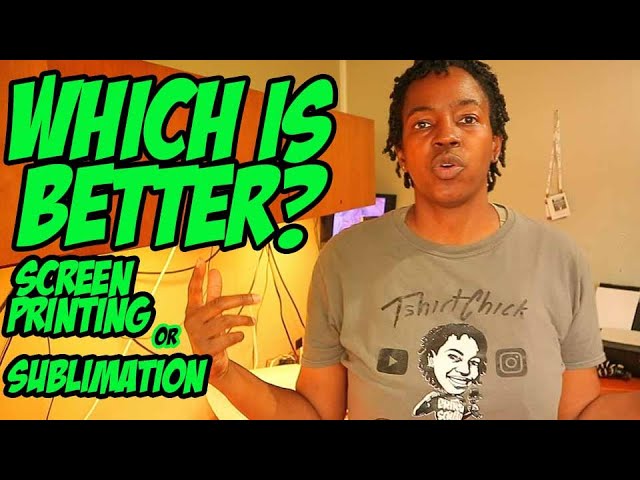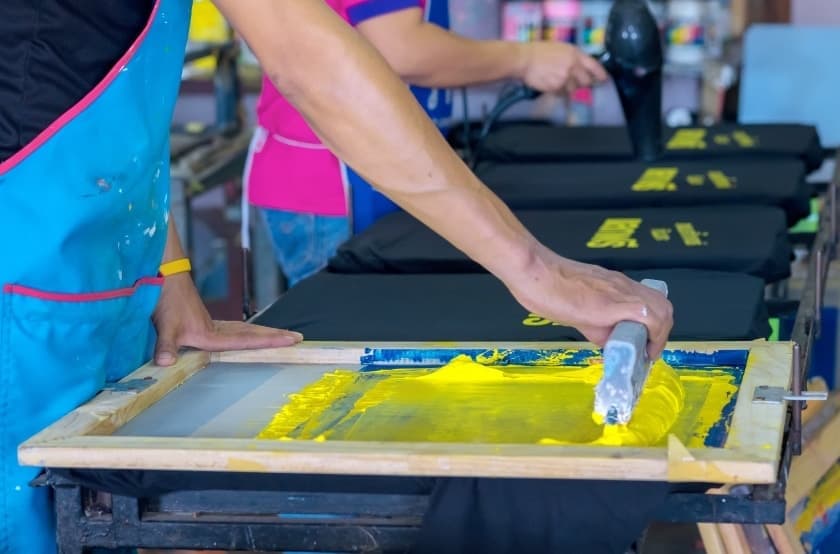The smart Trick of Tx Tees That Nobody is Discussing
The smart Trick of Tx Tees That Nobody is Discussing
Blog Article
Fascination About Tx Tees
Table of ContentsThe Best Strategy To Use For Tx TeesThe Buzz on Tx TeesIndicators on Tx Tees You Need To KnowHow Tx Tees can Save You Time, Stress, and Money.9 Simple Techniques For Tx TeesExcitement About Tx TeesTx Tees Things To Know Before You Get This
That brings your overall to roughly $1,900 gross and delivery. Build up other costs, like the variety of utilities it requires to run the store and the cost of ink and solution per style. embroidery shop. Take the print below. This is a one-color picture, so the expense of ink per t-shirt is approximately 20 cents.The solution must just be a couple of cents since you 'd only need to coat one display for this work. Usually, printers try to make up to 45% revenue on a print work.

With DTF, you can print a handful of shirts, or just one. Both display printing and DTF have their particular niches in the world.
Examine This Report on Tx Tees
The finest means to know? Ask about and see what printing shop like your own are doing. t-shirt printing. Try both out and see which you like far better
When you're selecting what kind of printing method to utilize for publishing your art work designs on your garments, it is very important that you understand the differences between these two techniques so you can make best use of results while lessening expenses. Screen printing is the most commonly utilized method for publishing designs on textiles.
DTG printing is additionally referred to as spot or direct to garment printing because it publishes only what is needed rather of making a screen as screen printers do. https://www.webtoolhub.com/profile.aspx?user=42385733. Display printing functions by display filler squeegee screen printing ink screen mesh display, after that transferring the picture to garment using warmth and/or pressure
The DTG printer utilizes unique dye-sublimation inks that are used right into a pre-designed photo by an electronic printing system. The inks enter into the material, enabling dynamic shades and extraordinary information. It's additionally understood as spot or straight to garment printing because it prints just what is required as opposed to making a screen as display printers do.
The 5-Minute Rule for Tx Tees
It's much faster - you can publish a fullcolor photo in mins, as opposed to hours for display printing. Second, there's no set up time or expenses included - you can print any type of style you like, without having to produce a screen. Third, there's no waste - since screen printers screen print one style each time, they have to screen each color separately.
The paper is very expensive and can only be used once. Once it's published on, it needs to be discarded. - The first acquisition rate is less than the ahead of time financial investment of DTG printers- You can print multi-color styles one screen at a time instead of having to publish each shade independently like DTG printing.

Indicators on Tx Tees You Need To Know
However, as opposed to making use of screen mesh as screen printers do, color sublimation printers make use of laser innovation to move your photos onto garments or paper. A heat procedure transfers the color from its solid-state directly into the gas phase which subsequently fuses it onto fabric substrates when they are quickly warmed to heats under high pressure.
Sublimation printing is environment-friendly. It makes use of much less water than screenprinting, and because it does not entail making use of hazardous solvents, it's risk-free for all sorts of garments. The color sublimation inks are additionally odorless when cured, unlike screen printers that utilize damaging chemicals throughout the display printing procedure that leave an undesirable smell.
They additionally conserve cash on pricey tools like direct exposure devices given that color sublimation printers do not call for a UV direct exposure device or a flash treatment stove that is commonly made use of in display printing (screen printer). What is direct to garment printing (DTG Printing)? DTG printing is a digital screenprinting process that publishes straight onto material utilizing specialized inkjet printers
Things about Tx Tees
DTG printing provides many advantages over standard screenprinting, including the capacity to print photographic top quality pictures, greater shade vibrancy, and the ability to publish styles on darker fabrics. DTG printers function by heating the fabric ink until it transforms into a gas. The gas after that permeates the fabric, bonding with the fibers to produce a permanent print.

Display printers just prepare their screen then start printing till they lack item or ink.- There is a wide variety of knowledgeable screen printers all over the world, which can be helpful for beginners. - It's a slower procedure - display printers usually need to wait on the ink to dry before they can publish the following color- Screen printers call for manual work, so there's a greater knowing curve and it takes longer to create a high-grade layout- Display printing isn't as precise as DTG printing, so you may obtain some "blood loss" of colors from one component of the photo onto an additional if not done correctly.
Indicators on Tx Tees You Need To Know
Rather of utilizing display mesh as screen printers do, dye sublimation printers make use of laser innovation to move your images onto garments or paper. A warm procedure transfers the color from its solid-state straight into the gas stage which consequently integrates it onto textile substrates when they are quickly warmed to heats under high stress.
Sublimation printing is eco-friendly. It utilizes much less water than screenprinting, and because it does not entail the use of dangerous solvents, it's safe for all kinds of garments. The color sublimation inks are also odor-free when healed, unlike screen printers that utilize unsafe chemicals during the display printing procedure that leave behind an unpleasant smell.
They additionally conserve cash on costly devices like direct exposure devices since dye sublimation printers don't need a UV direct exposure device or a flash treatment stove that is generally utilized in display printing. What is straight to garment printing (DTG Printing)? DTG printing is an electronic screenprinting procedure that publishes straight onto textile making use of specialized inkjet printers.
Getting My Tx Tees To Work
DTG printing provides numerous benefits over conventional screenprinting, including the ability to print photo top quality photos, higher shade vibrancy, and the capability to publish styles on darker materials. DTG printers work by heating the fabric ink up until it develops into a gas. The gas after that penetrates the material, bonding with the fibers to create a permanent print.
Report this page